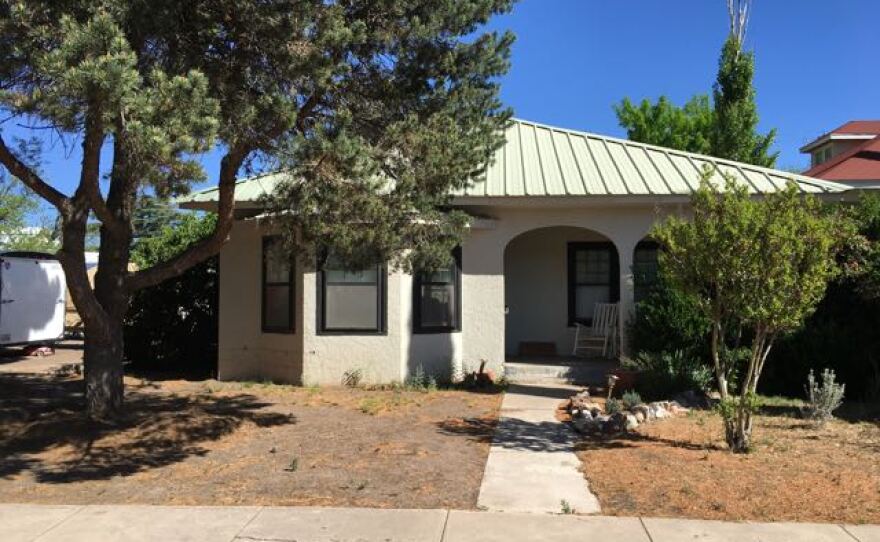Here’s the question I get most often as I meet people in Marfa: “Where are you staying?”
At first I thought it was just making conversation. But I’ve come to realize the question carries unusual intensity.
“Where are you staying?” it turns out, is a fundamental quandary in this town.
Marfa is stuck way out in the high desert. On the map, the town measures just 1.6 square miles. Surrounding it is cattle range—an openness that seems as impossible to build on as the ocean.
1.6 square miles is a tight confine for all the different expressions of Marfa: art mecca, county seat, old west railroad town, hip destination for loafing and biking and living at a slower pace.
And it’s tight quarters for the people who want to live here. There’s not enough housing.
Homes here tend to be small, most of them single story, with small yards. A stucco house with a roof of metal and a cactus or two growing out front – that’s probably your most typical home. Some are larger and of siding or brick. Some are even tinier – “casitas” of just a few rooms, the oldest made of adobe. And at the edge of town, in an area called Sal Si Puedes – which in Spanish means Get Out If You Can – are the dirt streets with trailer homes.
Everybody is packed into this little 1.6-square-mile rectangle. With hotels, and a courthouse, and a business district too. Perhaps because so much of the town is low, the sky so big, the streets wide, and the surrounding country so vast and empty, Marfa doesn't feel crowded.
Unless, that is, you need a place to live.
This week I spoke with Brad Bingham, who’s 29 and works in town. He just went through a hunt for housing.
“I started by just driving around looking for rentals. And that wasn’t really working. There’s not really any postings for places here online very often. And then, the more I thought about it, the more I thought maybe I would be better off if I just bought something.”
Brad and I are speaking outside – you can hear the train in the background there. Brad’s in the service economy, he’s got a good job managing facilities for a well-known tourist hotel-campground called El Cosmico.
He arranged to borrow money for a downpayment, and went looking for a house to buy. He found a very primitive fixer-upper – an old adobe, what he called “a small square divided into 4 rooms” with one wall crumbling away. Anyone else might consider it a teardown, but he figured he would put it back together and live there. Only, even that turned out to be too expensive, and the owner refused to come down on the price.
Second homers, Brad says, are a big crimp on the housing market here.
“A lot of the houses here are vacation homes that have been fixed up real nice, but they just sit vacant for the majority for the year, not rented to anybody, nothing. Maybe they're airbnb'd – but not even that, really.”
Brad gave up looking to buy when he happened across a rental, which he figured he’d better snap up, even though it was a lot more than he wanted to pay.
On Cape Cod and the islands, in many areas even the smallest shacks can be priced beyond the means of working families. It's a problem that’s been ongoing for decades.
For Marfa, this still feels like a new predicament.























